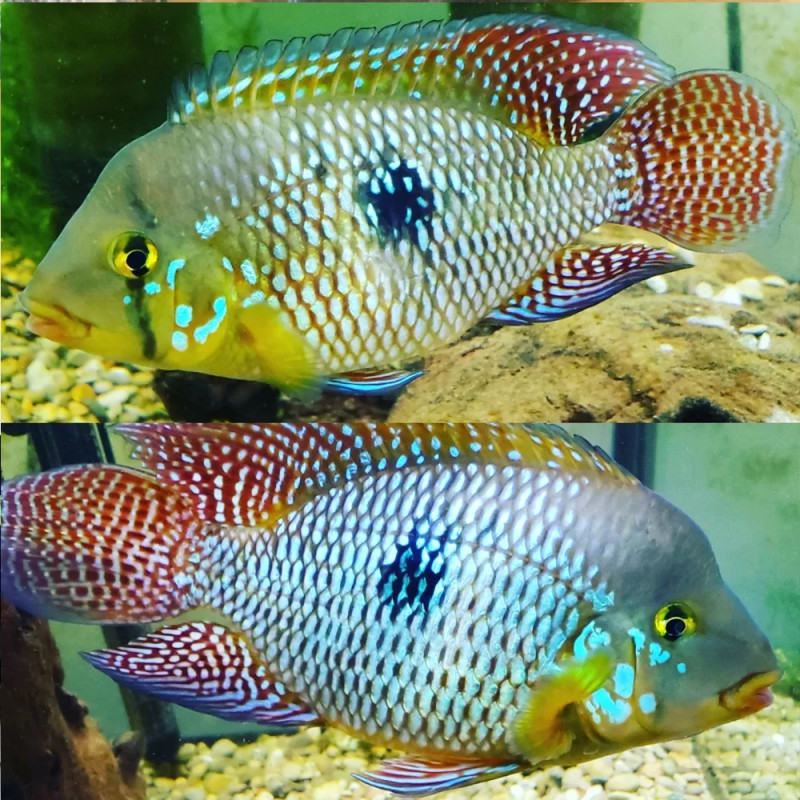More info
Common Name: Brazilian Eartheater, Pearl Cichlid, Geophagus Cichlid
Scientific Name: Geophagus brasiliensis
Order: Cichliformes — Family: Cichlidae (Cichlids)
Distribution: South America — Native to eastern and southeastern Brazil, Uruguay, and northeastern Argentina. Inhabits rivers, lakes, and estuaries in both freshwater and brackish environments.
Lifespan: 8 to 10 years
Maximum Size (Adult): 20 to 25 cm
pH: 6.0 to 8.0 — Hardness: 5 to 20 dGH
Temperature: 22°C to 28°C
Minimum Aquarium Size: 300 liters
Reef Safe (Compatibility): Not applicable — Freshwater species.
Behavior & Compatibility:
Generally peaceful when not breeding, but territorial during reproduction. Can be housed with similarly sized South American cichlids or robust community fish. Avoid mixing with small or timid species. Prefers spacious aquariums with open sandy areas for foraging and natural décor such as driftwood and rocks for shelter.
Diet:
Omnivorous with a benthic feeding habit. Naturally sifts through sand and substrate to extract small invertebrates, detritus, and plant material. In aquariums, accepts pellets, quality flake food, frozen fare (brine shrimp, bloodworms), and blanched vegetables. A varied diet maintains vivid coloration and vitality.
Reproduction:
Oviparous with biparental care. Forms monogamous pairs that defend territory and eggs fiercely. Eggs are laid on flat surfaces and guarded by both parents. After hatching, fry are protected and sometimes taken into the parents’ mouths for safety. Their parental behavior is notably strong and cooperative.
Sexual Dimorphism:
Adult males are larger, more colorful, and have extended dorsal and anal fins. Females are smaller, with rounder bodies and more subdued coloration, especially outside the breeding season.
Natural Habitat & Biotope:
Inhabits rivers, lakes, and lagoons with sandy or muddy bottoms, usually in clear or slightly murky water with abundant riparian vegetation. Found in both freshwater and slightly brackish habitats.
Etymology:
The genus name Geophagus derives from Greek geo (earth) and phagein (to eat), referring to its characteristic “earth-eating” feeding behavior. The species name brasiliensis means “from Brazil.”




